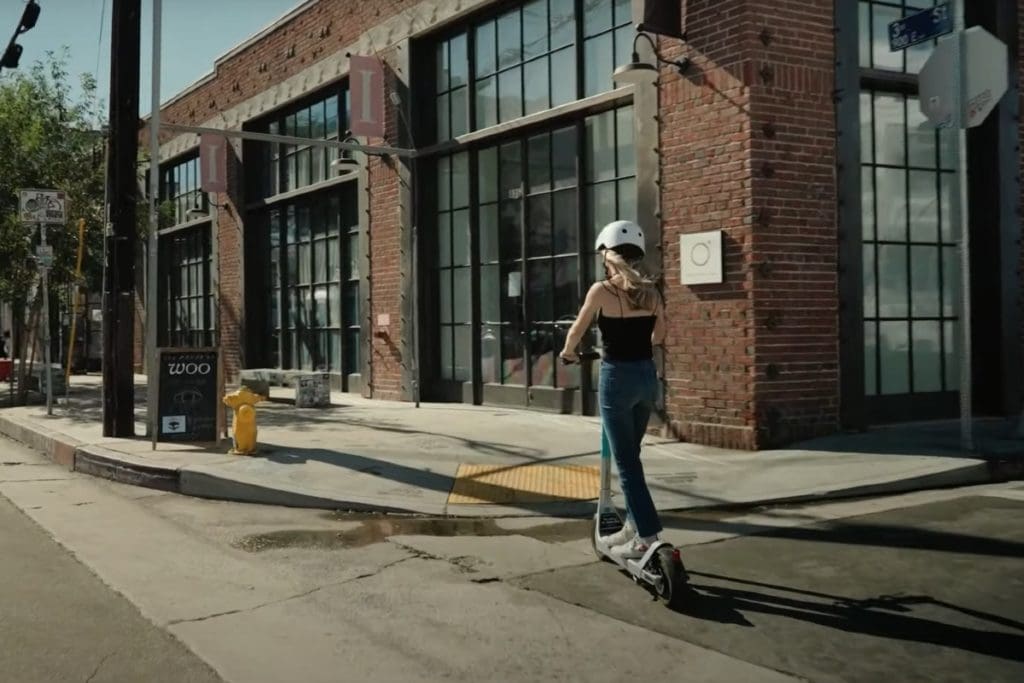New Bird Technology to Stop Riding on Footpaths

Santa Monica, California
Bird has unveiled a new hyper-accurate global positioning technology to help stop people from riding e-scooters on footpaths.
The Californian company has developed the Smart Sidewalk Protection system in partnership with Swiss-born tech developer u-blox, which is an industry leader in Global Positioning Systems (GPS) and Global Navigation Satellite Systems (GNSS).
A statement issued by Bird says the partnership has jointly developed “the world’s first end-to-end, high-precision positioning solution designed to deliver centimetre-level accuracy” specifically for micromobility applications.
They used Bird’s data to create a micromobility version of u-blox’s ZED-F9R module, a dual-band multi-constellation GNSS receiver that supports up to eight times more satellite signal types and four times more constellations (GPS, Galileo, GLONASS, and BeiDou) than standard positioning solutions.
The module processes real-time vehicle data including location, speed and acceleration, and has been optimised for e-scooters by applying dynamic models matching typical movements of the vehicle.
The system overcomes the challenge of GPS signal interference caused by tall buildings, providing the accuracy needed to monitor if an e-scooter is on the footpath or to detect other unsafe operations.
It is powered by a module that can easily be built into Bird vehicles and doesn’t require additional external hardware.
High Precision Mapping
The module and high-precision footpath mapping are now being installed in Bird’s newest scooters.
According to the statement, Bird has developed a “five-step process for creating high-precision sidewalk maps down to the centimetre”:
Step 1: Develop a geofence outline constructed from satellite imagery or city GIS data.
Step 2: Use surveying equipment to measure the location of three city landmarks. Only a few measurements are needed for each city.
Step 3: Once the landmarks have been identified, compare their location to the satellite imagery to determine offsets and rotations.
Step 4: Use these offsets and rotation values to shift and transform each of the original geofence outlines.
Step 5: Pre-load the updated geofence outlines onto the vehicles
“When combined with the hyper-accurate location measurements provided by our sensor-fusion module, Bird is able to detect and respond to sidewalk riding almost instantly,” the statement says.
“Riders travelling on a sidewalk receive both an audible alert, as well as a mobile notification, and the vehicle is brought safely and smoothly to a stop by removing throttle.”
The module is being piloted in Milwaukee and San Diego. The pilot will be expanded to Madrid, with plans for a broader roll-out in 2022.
Bird operates scooter and e-bike share services in more than 300 cities in the US, Europe and the Middle East.
The company last week announced it has teamed with Moovit, a leading Mobility as a Service (MaaS) solutions provider, to make it easier to access its scooters and e-bikes in 65 cities.
The integration is currently available in Austria, Belgium, France, Germany, Israel, Italy, Norway, Portugal, Spain, Sweden, Switzerland, and the UK, with plans to include US cities.
Bird Global Goes Public
Bird’s bid to become a public company was realised last week when it formed a business combination with special purpose acquisition company Switchback II and started trading as Bird Global on the New York Stock Exchange.
One a few days earlier, Switchback II shareholders voted to support the business combination.
Switchback II was formed to merge or enact similar business combinations with businesses involved in sustainability or energy transition. It was targetting companies implementing innovative solutions to decarbonise and meet emission reduction objectives.
Bird CEO Travis VanderZanden said establishing Bird as a public company would further its mission to increase global access to safe and sustainable transportation.
“Since 2017, we have partnered with more than 350 cities around the world to bring that mission to life.,” he said.
“Conservative estimates show that we helped communities avoid well over 10,000 metric tons of CO2 over the course of hundreds of millions of trips on our shared micro-electric vehicles.”
